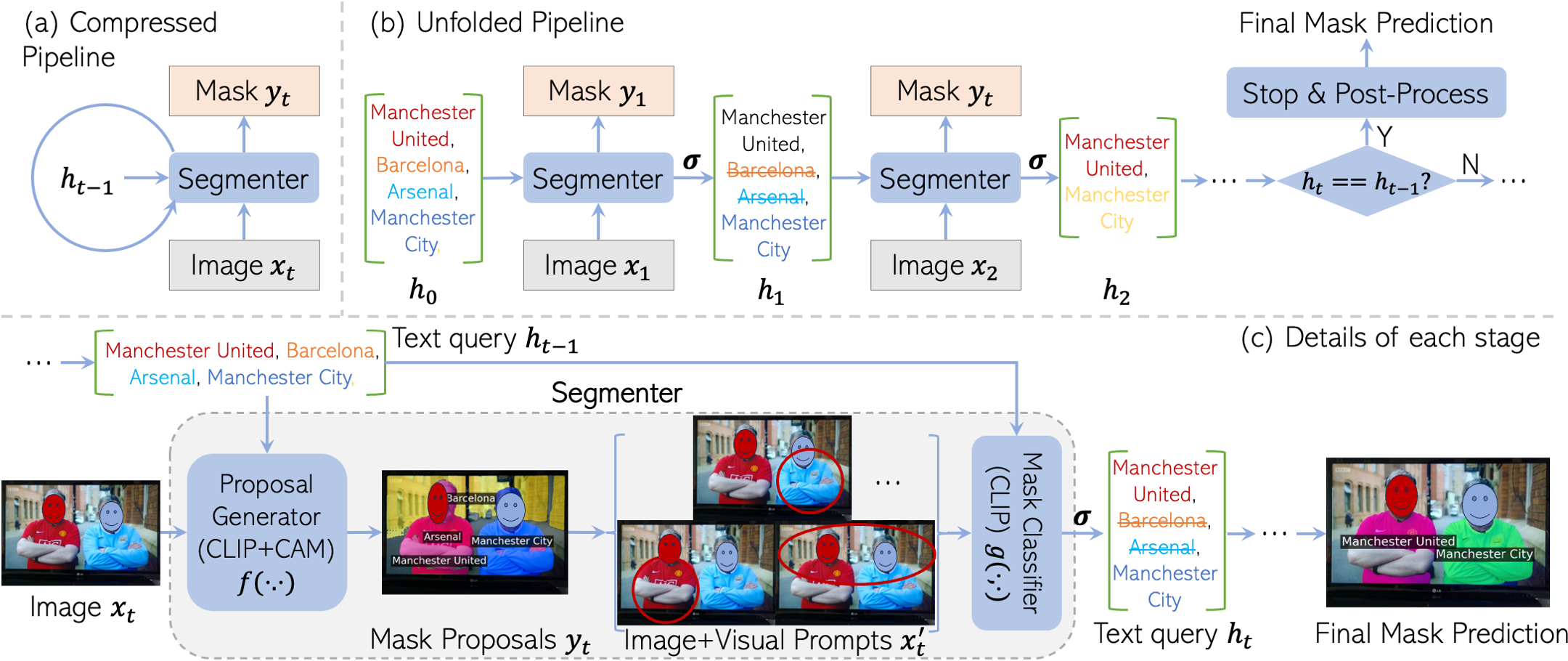CLIP as RNN: Segment Countless Visual Concepts without Training Endeavor
Shuyang Sun1, 2* Runjia Li1* Philip Torr1 Xiuye Gu2 Siyang Li2
1University of Oxford 2Google DeepMind *Equal Contribution
[Demo] [Code] [PDF]
TL;DR
We proposed a framework that can segment countless visual concepts without any training endeavour. Our method outperforms not only the training-free counterparts, but also those fine-tuned with millions of additional data samples, and sets new state-of-the-art records for both zero-shot semantic and referring image segmentation tasks.

Abstract
Existing open-vocabulary image segmentation methods require a fine-tuning step on mask annotations and/or image-text datasets. Mask labels are labor-intensive, which limits the number of categories in segmentation datasets. As a result, the open-vocabulary capacity of pre-trained VLMs is severely reduced after fine-tuning. However, without fine-tuning, VLMs trained under weak image-text supervision tend to make suboptimal mask predictions when there are text queries referring to non-existing concepts in the image. To alleviate these issues, we introduce a novel recurrent framework that progressively filters out irrelevant texts and enhances mask quality without training efforts. The recurrent unit is a two-stage segmenter built upon a VLM with frozen weights. Thus, our model retains the VLM’s broad vocabulary space and strengthens its segmentation capability. Experimental results show that our method outperforms not only the training-free counterparts, but also those fine-tuned with millions of additional data samples, and sets new state-of-the-art records for both zero-shot semantic and referring image segmentation tasks. Specifically, we improve the current record by 28.8, 16.0, and 6.9 mIoU on Pascal VOC, COCO Object, and Pascal Context. Code and a web-demo will be available for reproduction.
Method

Citation
@misc{clip_as_rnn,
title={CLIP as RNN: Segment Countless Visual Concepts without Training Endeavor},
author={Shuyang Sun and Runjia Li and Philip Torr and Xiuye Gu and Siyang Li},
year={2023},
eprint={2312.07661},
archivePrefix={arXiv},
primaryClass={cs.CV}
}